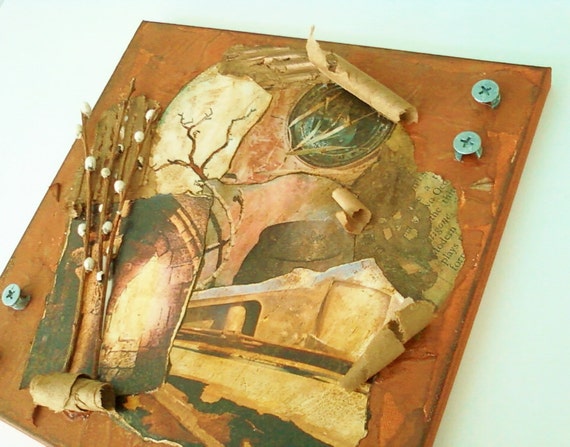Here's a great way to intensify a focal area, adding
interest to a painting or collage. Experiment with inks, fluid paint, water,
and more!
 |
| Underpainting for the drip technique. |
Paint a base, an underpainting, on canvas or paper first. Your
palette might be of several colors, with lights, darks, dulls, and/or brights. Markers
make a good addition at this time, too. (Waterbased markers will run and add
even more fascination!) Let dry.
 |
| The white drips add a high value to the painting. |
Prop the canvas or paper at a sloping angle.
Use inks, liquid watercolors, or thinned acrylic paints.
Pour them selectively or apply in places with a brush and let drip.
Next, mix watery paint in another color, value, or
intensity, and do more dripping. Here I added a few spatters too!
Note: you can tilt the canvas any direction you
wish, even changing direction as you go. If you have a spritz bottle of water
handy, use it to encourage more dripping and dilution as needed. Another helpful
tool is a hair dryer, which can alter the flow or slow it down.
 |
Rework the painting as desired.
|
Paint out some sections to make them appear less busy, more
calm.
If you don't like the painting you've created, use it as the
background for a new work. If the unsatisfactory piece is on paper, you can cut
or tear it apart and use the best pieces in a collage!
Yes, chance plays a part
in the dripping technique, but it adds
emphasis and appeal.











































































